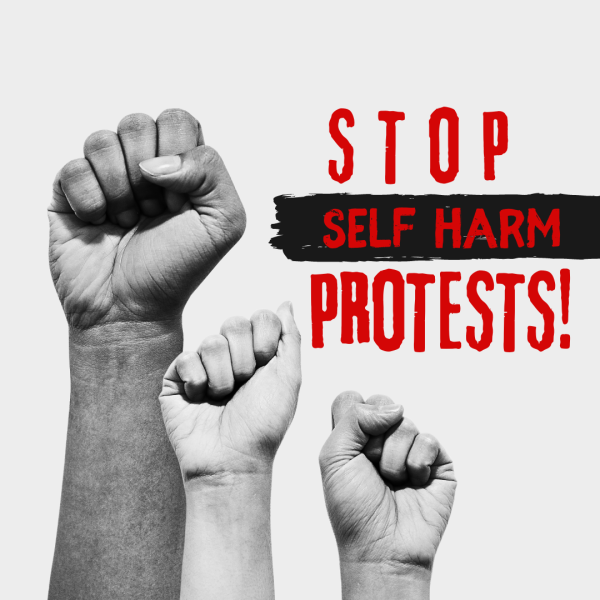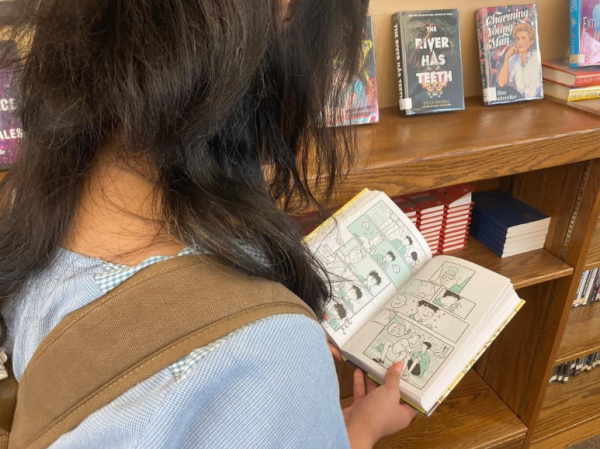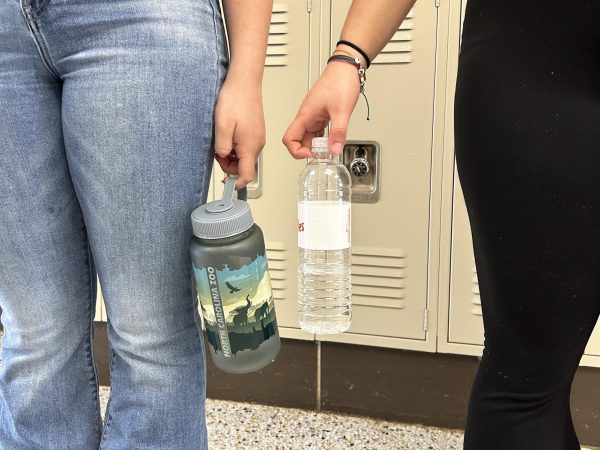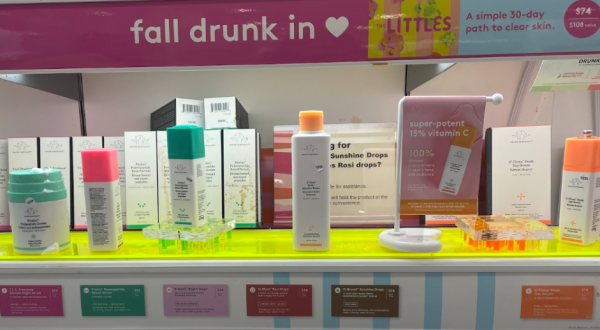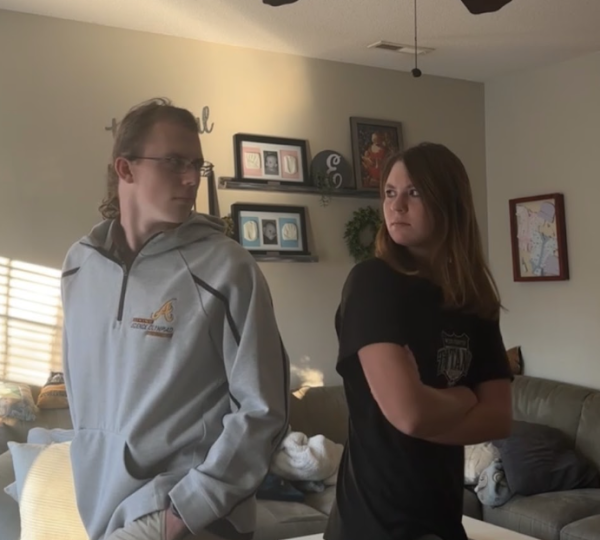Laminated signs don’t stop bullying
April 9, 2021
Last year, another Anti-Bullying October came and went. You might have noticed, but you probably didn’t. After all, it’s not like much really gets done in this month, compared to others The school has some students walk around in orange to show that they stand with victims of bullying, and your school might do a kindness chain, but what really happens during Anti-Bullying month outside of that? Well, the simple answer is nothing, because schools do nothing as a whole year ‘round.
About 20% of students between the ages of 12 and 18 are bullied- and that’s just what’s been reported, according to stopbullying.gov. The funny thing about that is that even though 20% isn’t a huge number, that number is still way too high, because the number should be 0%. The same source states that 50% of those kids felt as though the bullies had more social influence, going as far as saying that 31% believed their bullies had more money than them. Now you might be wondering, “why would I bring money into this? What does money/socioeconomic status have to do with bullying?” If you’re asking that, then you don’t understand the importance of one’s social class in their developmental years. We often see depictions of children get bullied for wearing cheap or dirty clothes, but we never seem to think about why those clothes are dirty. It’s because the family is poor, or of a lower social status. This classism is taught to us and normalized early on in life, leading to fewer questions when your boss insists he makes more than you, despite you working harder than him. Social influence and the high class are intrinsically linked- the more money you have, the easier it is to get people to listen to you, if only because you can simply afford a bigger platform. This all leads to more people bullying you because this person everyone listens to says you should be bullied.
Bullying, of course, is not 100% based in classism. What most schools and the government won’t tell you about bullying is that a decent percent of children bullied are neurodivergent. That basically means that their neurological workings are different than most people’s, resulting in disorders such as ASD (Autism Spectrum Disorder), ADHD, OCD, and several other disorders. To be specific, cbsnews.com states that 63% of autistic children are bullied. These children are hurt, because in younger years, the illnesses mentioned can present in ways society has stigmatized as abnormal, strange, or even just wrong. A child, especially a younger one, might not understand that bullying someone for being “different” is wrong, as their brains simply haven’t developed that far yet. This, of course, doesn’t make it okay, but you can’t expect a young child to quite grasp that. While sometimes kids are just cruel, society’s rules of “right and wrong” can contribute to and even amplify that cruelty. In fact, that often plays along with why LGBT+ kids are bullied in the first place. Society has looked at queerness and labeled it as wrong and strange, and parents teach their kids that what society says is right. More than enough LGBT+ students have gone to school officials for help, only for many to say “maybe you just shouldn’t be gay.” It happens so much that it’s practically a joke among the LGBT+ community. There are also, of course, instances of students experiencing bullying for being people of color- education.fsu.edu even states that 23% of allegations of bullying were based on the bullied persons’ race. To quote, “Racial minority students specifically report more instances of being threatened, hit, put down by peers, or having belongings forced from them, stolen or damaged. [They are] less likely to perceive it as bullying.”
Now that you know more facts about bullying and the groups targeted, let’s think again about how little schools do about bullying. Why do you think that is? Is it because of schools simply not knowing the issue? To that I say simply, there’s no way school officials don’t know about the major problem that is bullying, as stopbullying.gov states that 46% of students grades 9-12 reported the bullying to an adult at the school. 43.4% of students report being bullied in hallways, and 42.1% report being bullied in the classroom, places where teachers should definitely be able to see. The real reason schools and teachers do nothing about bullying is because of their own bias against the groups that are most often targeted, their own beliefs that the student deserves it. When teachers themselves are insensitive and insulting towards disabled kids or kids who are neurodivergent, can you really expect them to make any effort to stop the harm being done? Some even see it as a discipline issue rather than a disability, despite neurodivergence being scientifically classified as a disability and seen as, to quote healthassured.com, “alongside ethnicity and gender.” They are part of the society that perpetuates right and wrong, and they are training us to be part of it. It goes without saying that most teachers do care, but when bullying is such a major issue and one bad apple spoils the bunch, what are ten bad apples going to do? Stopbullying.gov even has a section under “get help now” explaining what to do if the school does nothing about the bullying based on their own bias. When the problem is so bad that the government needs to list out steps on what to do in case of it, isn’t that a bad sign?
I’d also like to point out a consequence of bullying that not many people really like to or are comfortable addressing. “Research indicates that persistent bullying can lead to or worsen feelings of isolation, rejection, exclusion, and despair, as well as depression and anxiety, which can contribute to suicidal behavior.” According to stopbullying.gov.
While the reason for suicide can often be a combination of factors, bullying never helps the issue. Bullying is seen by many as a form of abuse, and is regarded in some circles as “peer abuse,” which not only more accurately describes what it is, it also takes it in a more serious light, making it harder to ignore. Suffering peer abuse can be just as bad as having an abusive family and can be just as damaging, leaving children with mental trauma, referred to scientifically as “little t” trauma. That’s not even including if your bullies are physically abusive as well.
Peer abuse- bullying- is an issue that affects every school across the country and happens to tens of thousands of students every year, yet schools still do nothing about it. “See Something Say Something” never meant anything to them, even to the point where some students get in trouble for standing up. It was a pathetic attempt to cut down on bullying while the real problem raged on behind the scenes, behind the desks. When a system is broken, it should be fixed. Teachers should be taught that their bias is incorrect, wrong and harmful, and children should be taught to be more open-minded and to not bully kids for being supposedly different. Laminated signs and kindness chains won’t stop bullying- the only thing that can stop it is eliminating bias and stopping children from bullying each other the minute the bullying is noticed. “Stop bullying” should actually mean something.





